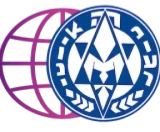By: Alex Bitterman
The Zionist movement in its organized and political form, which began in 1987 with the
First Zionist Congress in Basel, constantly aimed for the creation of a Jewish state to find,
on the one hand, a solution to the national Jewish problem, and on the other hand, reach
the redemption of the people in the beloved Land of Israel.
The creation of the State of Israel thus marks a climax and a turning point in the return of
Am Israel to its native land as an independent state. Even so, we cannot consider it their
historical and cultural starting point since the Jewish people carry millenary historical
baggage. The Jewish people had independent characteristics in Eretz Israel in the past, and
the Jewish tradition itself grew and flourished in the diaspora despite not having a state of
its own. The Jewish Thought – the fruit of thinkers, philosophers and chachamim
throughout the Jewish history (Talmud, Chazal, Tor Hazahav, etc.) – offers us an
undeniable cultural wealth, which is one of the strongest foundations of our people, along
with the practices and religious traditions (Kashrut, Mitzvot, Chagim, Halachot, etc.).
This vast Jewish cultural “production” accompanied us throughout history, kept us united,
and allowed us to reach, as a united people, the moment of the creation of the State and is
considered an element within the national folklore. In addition, the modern folklore was
formed, mainly created by the vision of a secular pioneer movement, which updated and
transformed some of the old traditions into a more modern and current expression, giving
meaning and added value to the spirit of the time. We can see it in the case of Chag
Shavuot, in which the Jewish people traditionally celebrated Matan Torah and used to
spend the night studying (Tikun Leil Shavuot), which has become a festival related to
agriculture and the redemption of the Land of Israel.
This is how, throughout the seventy years of existence of the State of Israel, we see a
constant dynamic between the old and new, between our historical identity as a people
and our new identity as a renewed nation. During Israel’s seven decades we have
witnessed clashes, disputes and dilemmas between these elements, many of them in the
religious field, and how it influences the daily lives of the Israeli citizens – in the
character of the Shabbat, the Jewish holidays, religious marriage, the Orthodox
Rabbinate’s monopoly, etc. But along with the religious aspect, we see the clash between
old and new in other fields: culture, community, values, lifestyle, etc.
The dream of the Jewish State, according to the vision of Binyamin Ze’ev Herzl, was very
clear and detailed, and at this very special moment we must ask ourselves: Did we really
fulfilled this dream? Is the constant renewal that the country experiences distancing us
from established foundations and pillars?
Are we slowly losing the essence and identity of our country? These questions may be
challenging at times, and even painful for some, but must constantly be asked.
Israel’s seventieth anniversary is not only an occasion to celebrate for our great conquests
as a nation, but it is also an opportunity to profoundly reflect on our path as a people and
a nation in Israel. Similarly to the way the Jewish calendar grants us the platform of
“Cheshbon Nefesh Ishi” (personal reflection) in Yom Kippur, we also have the platform of
“Cheshbon Nefesh Leumi” (national reflection) in Yom HaAtzmaut. For us in Hanoar
Hatzioni, this day is an opportunity to raise questions that allow us to clarify our path,
analyze our past achievements, be proud and criticize the present and always have a clear
vision, a “compass” of the values which helps us to maintain our essence as a Jewish
nation and an exemplary nation (Or Lagoyim).










